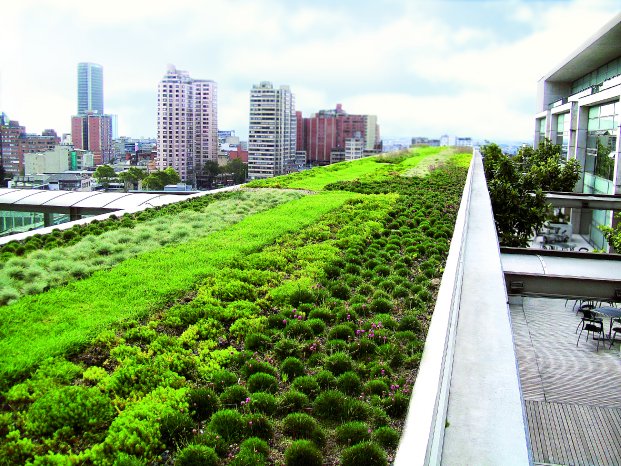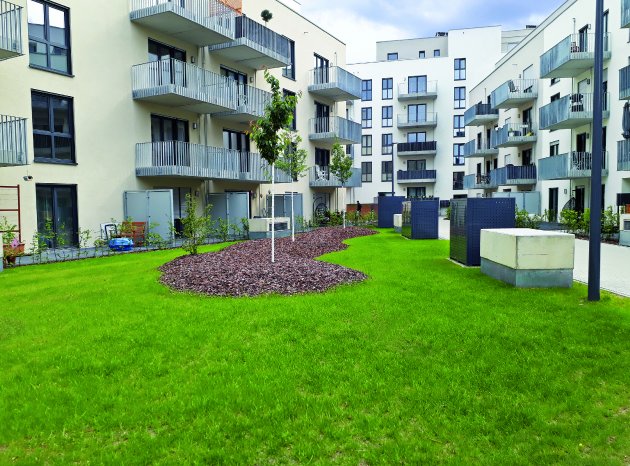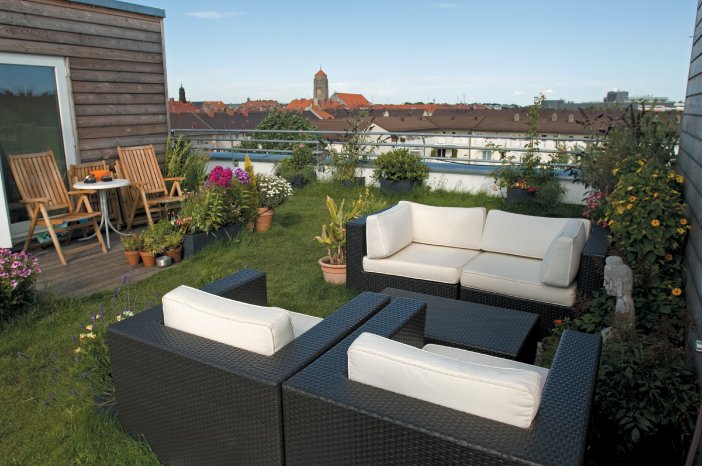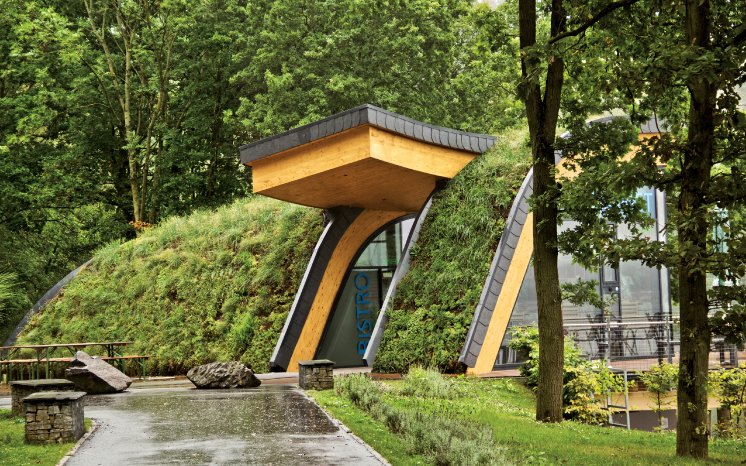The contribution of these roofs to sustainable building in the 21st century, not to mention their variety of uses, is simply incalculable.
In addition to value-added in terms of quality of life due to the wonderful optics, green roofs also provide tangible and measurable benefits such as the protection of the building substance. Green roofs prolong the lifetime of the roof waterproof membrane significantly as they protect it from the impact of climate and weather, for example, from ultraviolet rays and extremes of heat and cold.
In addition, the green roof build-up improves sound insulation, provides a shield against electromagnetic radiation and functions as an additional layer of insulation, which means less need for heating in the winter and a measurable cooling effect in the summer.
In addition, plants bind fine dust and pollutants.
Green roofs contribute considerably to flood protection during strong rainfall events. Depending on the type of construction, 20 to 100 l/m² of storm water can be stored. Special retention green roofs even enhance this effect.
The storage and evaporative effect of plants moreover, has a positive effect on the micro-climate and even this natural effect can be reinforced by a special system build-up.
For almost 50 years now the name ZinCo has been synonymous with permanently reliable green roof systems for all types of application and roof pitches up to 35°. Whether it’s a low-maintenance ecological compensation area with a high degree of biodiversity, a fascinating roof garden or an (underground) car park deck with walkway, driveway and play areas or a valuable combination with solar energy systems – the architectural highlight that is the green roof offers an infinite number of elements for sustainability. These factors all want to and must be used if future construction is to be ecological and is to meet the needs of the future.





